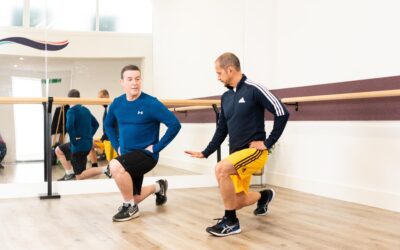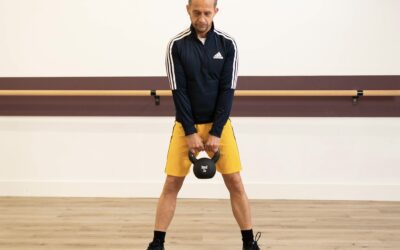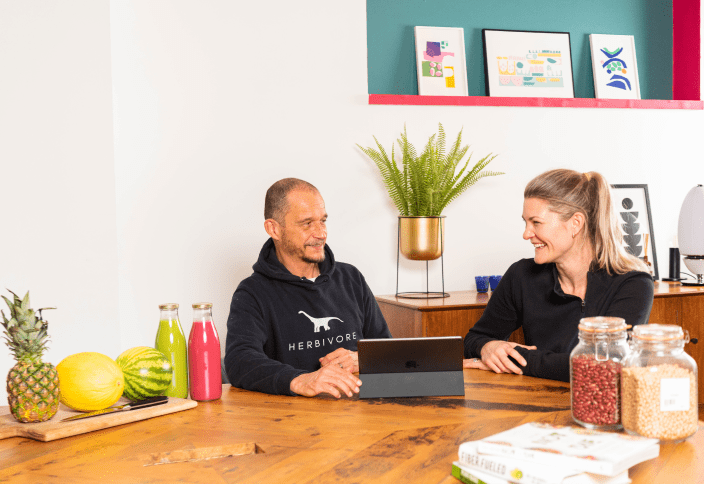Introduction
If you have read my blog on the importance of muscle mass and strength as we age (click here) you will know that we should all be doing regular strength training alongside cardio workouts. If we go to a gym we will have access to a range of free weights and resistance training machines with which we can work muscles through weight lifting. However, it’s quite easy to do weight training at home, as I do, using a combination of body weight, simple dumbbells, kettlebells, and resistance bands. I have already posted a series of blogs covering bodyweight exercises for leg strength. Click on the links for low, intermediate, and high impact workouts. I will cover resistance bands and kettlebells in the future, but for now, here is a brief introduction to how to get started with your own dumbbells for upper body strength and muscle building exercises.
Equipment and space
In terms of space, a clear, flat area of around 2m x 2m is required.
A sturdy chair, such as a dining room chair, can be useful for some exercises.
Basic equipment:
I strongly recommend investing in a 20kg set of adjustable cast iron dumbbells. This set consists of:
2 bars with spinlock collars (1.5kg each bar and collars)
2 x 2.5kg discs
2 x 1.25kg discs
2 x 0.5kg discs
With all of the discs on the bars, each dumbbell will weigh 10kg. That is the maximum weight for this set. By removing and interchanging the discs the dumbbells can be set to any weight from 1.5kg to 10kg each. This flexibility means that exercises requiring different weights can be undertaken using the same dumbbell set.
I always choose cast iron weights rather than cement-filled plastic ones because they are far more durable and they take up much less storage space.
This dumbbell set will cost £45-60 depending on offers available at any given time. Take a look at the start of the first video below to see me describe this equipment.
An introductory bodyweight and dumbbell workout
This workout of 5 exercises will help you to develop muscle mass and strength across the chest, shoulders, and arms. Here are the exercises:
- Press ups
- Biceps curls
- Lateral raises
- Overhead press
- Triceps press
Take a look at the “how to” video below for technical tips and guidance.
An intermediate dumbbell workout
To further develop upper body strength, and to add variety to your workouts, you can introduce some or all of these exercises:
- Chest flys
- Single arm row
- Front raise/lateral raise
- Triceps pullover
- 45 degree press
Take a look at the “how to” video below for technical tips and guidance.
Exercise repetitions, sets, rest, and progression
For each exercise you should do 3-5 sets of 8-12 repetitions (reps). This should be enough volume of work to stimulate muscle overload, and therefore the muscles will rebuild back stronger in the subsequent recovery phase.
By the end of the final set you should be struggling to lift the weights and finish the reps. If you are not working at 100% like this, at least in the last set then you won’t overload the muscles.
Here is an example, using biceps curls, of how you should structure and progress your exercises from the first session.
Session 1: 4 sets of 10 reps with 6.5kg dumbbells – finished comfortably
Session 2: 4 sets of 12 reps with 6.5kg dumbbells – finished with difficulty
Session 3: 4 sets of 12 reps with 6.5kg dumbbells – finished comfortably
Session 4: 4 sets of 8 reps with 7.5kg dumbbells – finished comfortably
Session 5: 4 sets of 10 reps with 7.5kg dumbbells – finished with difficulty
Across the 5 sessions the work has increased from 4 x 10 reps with 6.5kg dumbbells to 4 x 10 reps with 7.5kg dumbbells. You will notice that the first increase was in the number of reps, from 10 to 12. Once you can accomplish 4 x 12 reps you should increase the weight in the next session, but drop the reps to 8 for each set. Then build up the reps from session to session until you get to 4 x 12 with the new weight. That’s the time to increase the weight again and drop the reps to 4 x 8.





